Pinacoteca Nazionale di Bologna
The Pinacoteca Nazionale di Bologna was founded in 1808 as a picture gallery of the Accademia di Belle Arti, the educational institution born from the ashes of the eighteenth-century Accademia Clementina. The ancient nucleus, coming from the Institute of Sciences, was later enriched by the extraordinary collection of almost a thousand paintings resulting from the suppression of churches and convents carried out after the entry of Napoleon’s troops into Bologna, between 1797 and 1810, and again following the suppressions of 1866 implemented by the new Italian state.
In the branch of Palazzo Pepoli Campogrande it is possible to admire the splendidly frescoed rooms by the main protagonists of the great Bolognese decoration between the second half of the seventeenth century and the beginning of the following century: the Hall of Honor with the triumphal Apotheosis of Hercules by Canuti, the Sala of Felsina with the composed and graceful paintings of the Rolli brothers, the rooms of the Seasons and of the Olympus, where the irreverent Giuseppe Maria Crespi contaminates the celebratory decoration with the methods of genre painting, the elegant classicism of the Room of Alessandro di Donato You believe. The rooms on the main floor of Palazzo Pepoli Campogrande house some paintings from the Zambeccari picture gallery on the walls.
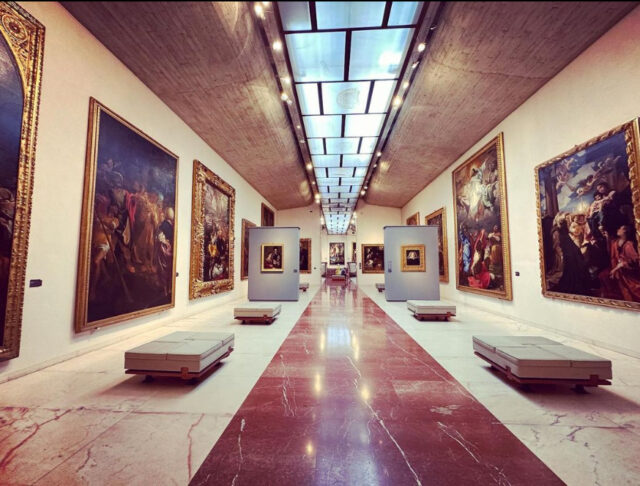
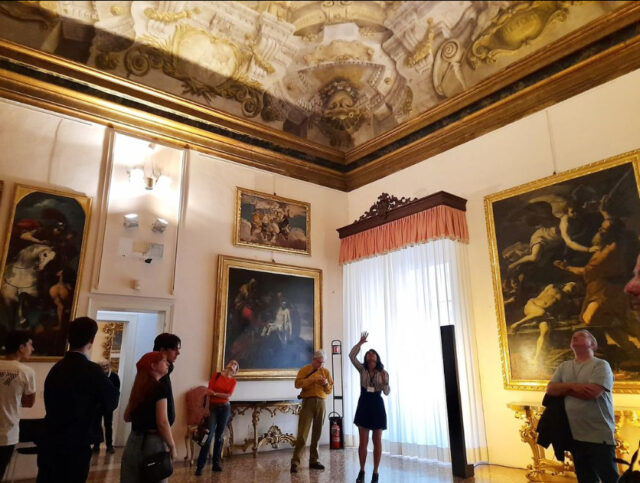
The museum itself was founded in 1808 as a picture gallery of the Accademia di Belle Arti, the educational institution that arose from the ashes of the eighteenth-century Accademia Clementina. The ancient nucleus, coming from the Institute of Sciences, is enriched by the extraordinary collection of almost a thousand paintings resulting from the suppression of churches and convents carried out after the entry of Napoleon’s troops into Bologna, between 1797 and 1810
Throughout the 19th century, the Pinacoteca experienced a strong increase in rooms and works: the result of the suppressions of 1866 implemented by the new Italian state, but also of bequests and acquisitions.
The greatest spatial increases took place in 1914/1920, with the addition of the Corridor leading to the large octagonal room (by the architect Edoardo Collamarini, under the direction of Francesco Malaguzzi Valeri), and after the Second World War with the construction of the Salone del Renaissance.
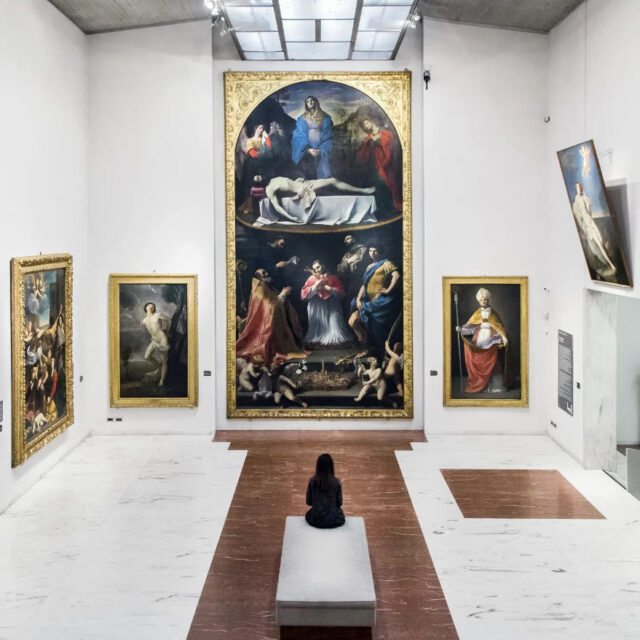
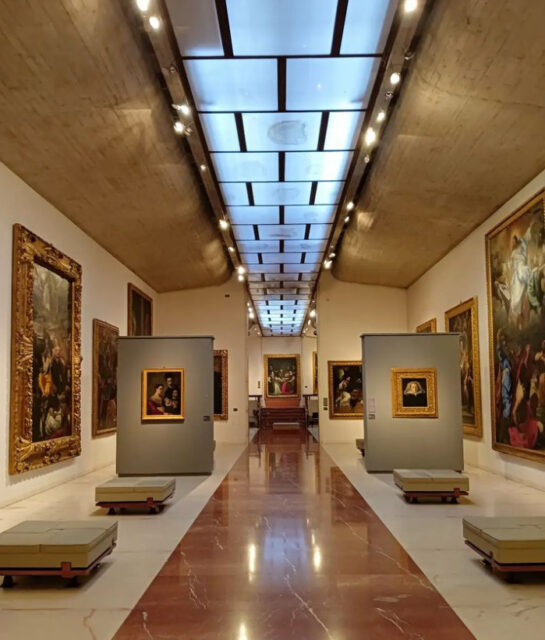
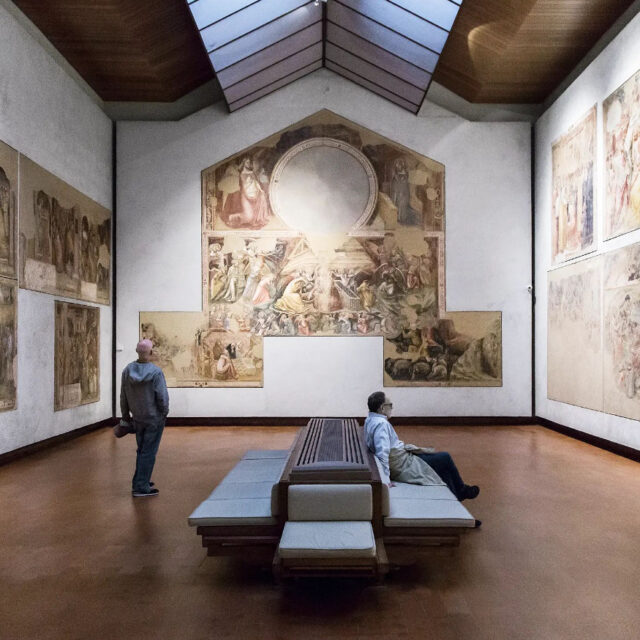
The last adaptation of the exhibition itinerary (completed in 1974) is instead due to the architect Leone Pancaldi under the guidance of the then director Cesare Gnudi: it was on this occasion that the current access staircase was obtained in the space of the ancient chapel known as the Novitiate, frescoed with the “Glory of Saint Ignatius” by the Jesuit painter Giuseppe Barbieri.
The tour itinerary starts from the rich testimonies of the fourteenth century in Bologna, with works by Pseudo Jacopino, Vitale and Simone dei Crocefissi, without forgetting the significant presence of Giotto’s polyptych. For this first period of Bolognese painting, the section dedicated to the frescoes from the church of S. Maria di Mezzaratta, recomposed according to the original architectural structure, is of particular importance.
The Renaissance is witnessed by the Ferrarese Francesco del Cossa with the “Pala dei Mercanti” and Ercole Roberti with the small fragment of the Garganelli chapel in S. Pietro and by the Bolognese Francesco Francia, with numerous altarpieces.
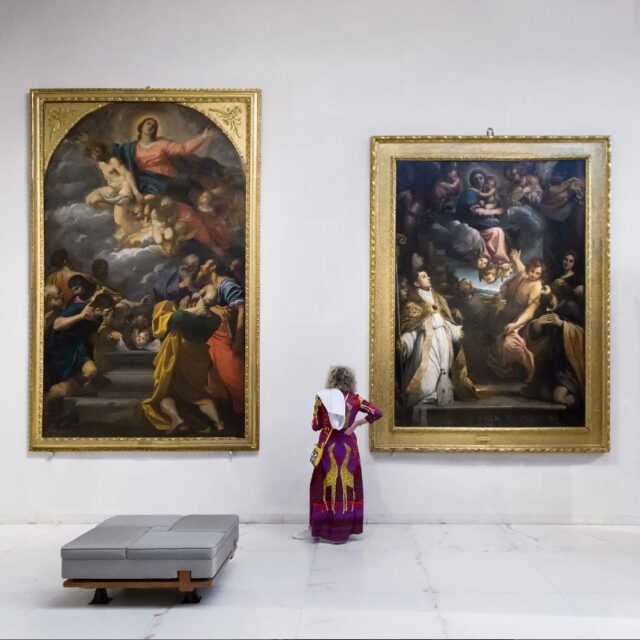

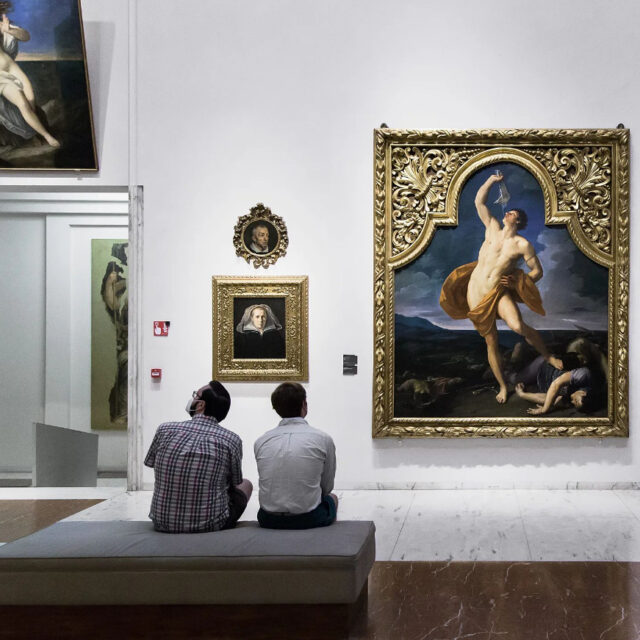
Proceeding from the masterpiece of the “Ecstasy of Santa Cecilia” painted for Bologna by Raphael, the itinerary reaches – after the works of Parmigianino (the so-called “Pala di S. Margherita”) and Passerotti – the reform of the late sixteenth century, witnessed by the thick production of the Carraccis, within which the “Communion of Saint Jerome” by Agostino, the “Altarpiece of Saint Ludovico” by Hannibal, the “Annunciation” and the “Madonna Bargellini” by Ludovico must be mentioned.
Then follow the cornerstones of the Emilian seventeenth century with works by Guido Reni, among whose masterpieces we should mention the “Massacre of the innocents” and the so-called “Pala del voto”; with the three extraordinary altarpieces by Domenichino depicting “The martyrdom of Saint Agnes”, the “Madonna del Rosario” and the “Saint Peter martyr”; the “Baptism of Christ” by Francesco Albani; the “Lamentation over Christ” by Alessandro Tiarini, “Sebastiano edited by Irene” and “Dressing of Saint William”, by Guercino.
The itinerary concludes with the multifaceted eighteenth century – from time to time aristocratic and popular – by Giuseppe Maria Crespi (we mention the “Farm” and the “Self-Portrait”); by Donato Creti (the two “allegorical tombs”) and by the brothers Gaetano and Ubaldo Gandolfi. More

